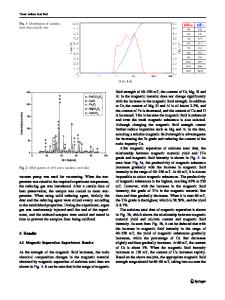Steel Material Preparation
Any fabrication activity is preceded by the steel material preparation activity. Steel plates and sections are received from the steel mills in as rolled condition. The very process of production in steel mills leads to formation of residual stress and a
- PDF / 198,557 Bytes
- 6 Pages / 439.37 x 666.142 pts Page_size
- 101 Downloads / 328 Views
Steel Material Preparation
Abstract Any fabrication activity is preceded by the steel material preparation activity. Steel plates and sections are received from the steel mills in as rolled condition. The very process of production in steel mills leads to formation of residual stress and a hard layer of oxides over the steel surface. Both this locked-in stress and the oxide layer, known as mill scale, needs to be removed before taking the plates and sections for further production operation. The handling of materials from steel mill to shipyard steel stockyard may also lead to surface deformation, hence straightening is required. Thus steel material preparation involves, straightening, stress relieving and mill scale removal. The plates are fed from the steel stockyard to the straightening machine and from there to the surface dressing station. Surface dressing is necessary to remove mill scale present on the plate surfaces. Mill scale is a layer of ferric and ferrous oxides formed on the plate surface during the hot rolling operation of the steel plates in steel rolling mills. There are various methods of surface dressing, however shot blasting and chemical pickling processes are the most efficient ones.
The sequence of production activities carried out from steel stockyard to the stage of fabrication of subassemblies is shown schematically in Fig. 10.1. Here one can see that any fabrication activity is preceded by the steel material preparation activity. Steel plates and sections are received from the steel mills in as rolled condition. The very process of production of these steel materials leads to formation of residual stress and a hard layer of oxides over the steel surface. Both this locked-in stress and the oxide layer, known as mill scale, needs to be removed before taking the plates and sections for further production operation. The handling of materials from steel mill to shipyard steel stockyard may also lead to surface deformation, hence straightening is required. Thus steel material preparation involves, straightening, stress relieving and mill scale removal. The plates are fed from the steel stockyard through roller conveyor to the straightening machine and from there again through roller conveyor to the surface dressing station.
© Springer Nature Singapore Pte Ltd. 2017 N.R. Mandal, Ship Construction and Welding, Springer Series on Naval Architecture, Marine Engineering, Shipbuilding and Shipping 2, DOI 10.1007/978-981-10-2955-4_10
111
112
10
Steel Material Preparation
Fig. 10.1 Sequence of plate fabrication activities
10.1
Straightening and Stress Relieving
The straightening and stress relieving operations are done by passing the steel plates through a multiple roller machine subjecting the plate to several reversal of plastic bending as schematically shown in Fig. 10.2. For thicker plates (thickness ≥ 12 mm) generally a 5 roller machine is used. However for lesser thickness plates, several bending are to be imparted to relieve the residual stresses and to straighten the plates. For plat
Data Loading...











